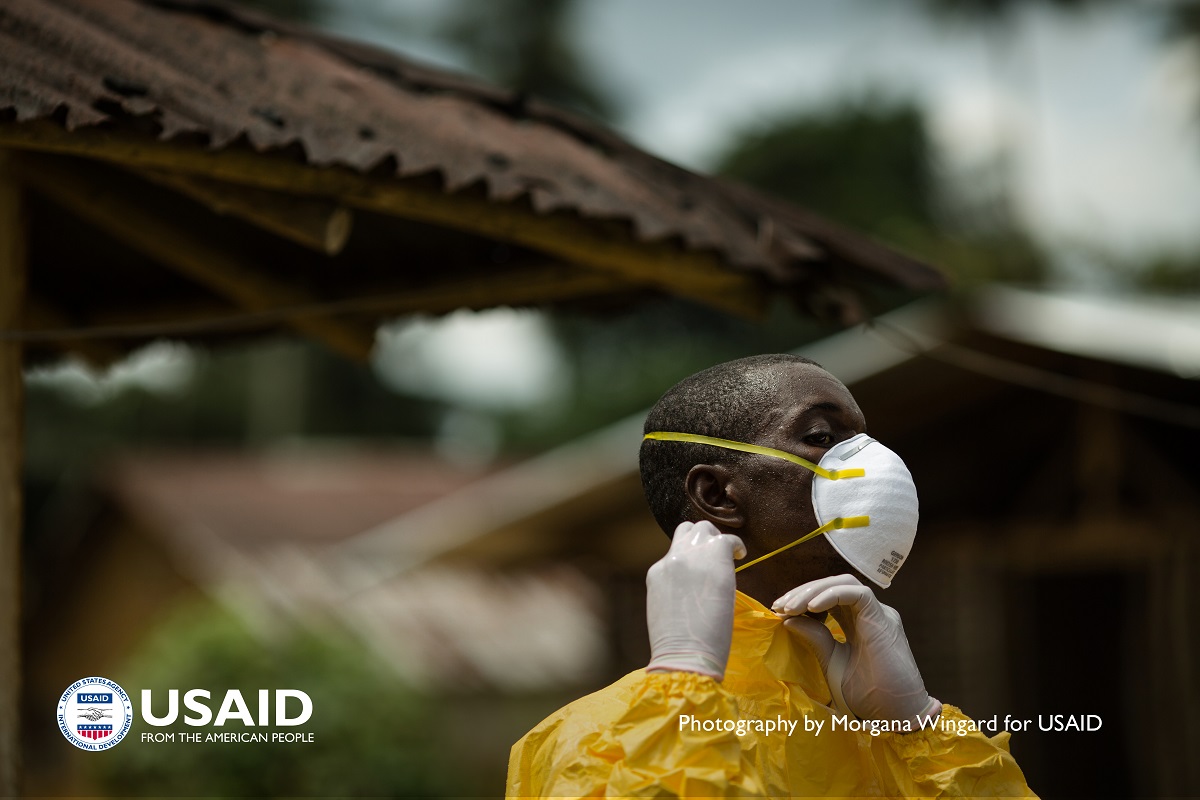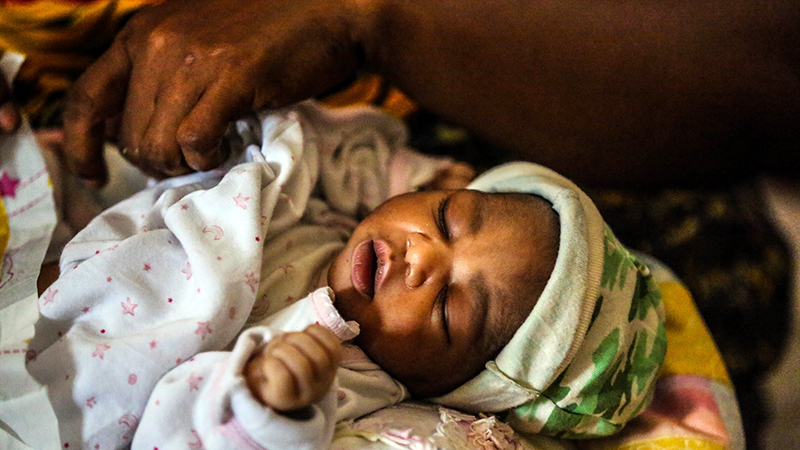On July 17, the World Health Organization (WHO) declared the Ebola outbreak in the Democratic Republic of the Congo (DRC) a Public Health Emergency of International Concern (PHEIC). The second largest Ebola outbreak in history, almost 1,800 people have died and more than 2,600 have been infected. Shortly after the announcement, DRC’s President Felix Tshisekedi removed the health minister’s management responsibility for the crisis, reassigning responsibility to a multi-disciplinary team of experts. On July 23, the health minister, Oly Ilunga Kalenga, resigned.
The declaration of the public health emergency was arguably a strategy to mobilize additional, much-needed resources for the crisis, which to date has been hugely underfunded. The WHO estimates that it alone needs an additional $324 million in funding for response and preparedness, which is almost three times the amount that has been committed thus far ($114 million). On Wednesday, the international community responded quickly, with the World Bank committing an additional $300 million, USAID committing $38 million, and the EU committing €30 million. According to the World Bank, their financing will cover about half the amount requested in the Fourth Strategic Response Plan (SRP4), which is anticipated for release by the DRC Government in the next week.
As the financing gap continues to be filled, more thought is needed about how to allocate these newly released funds to best combat the highly complex epidemic, including streamlining financing flows so that funds get to where they are needed. Funds should be directed to address specific gaps, and funders will need to exhibit better coordination and prioritization than they have to date. Here are our thoughts for next steps:
1. As more money is committed, prioritize transparency and coordination
First and foremost, we encourage better transparency and coordination regarding where money is going, what is being funded, which activities have shortfalls, and what is needed to align new incoming funding with needed activities to contain and end the epidemic.
So far, funding for the crisis has not been streamlined or coordinated, making it difficult to track. Funding has been allocated through multiple channels, including the Ebola response plan, humanitarian response support for the DRC, in-kind support, personnel support, and bilateral support for the government. The newly committed World Bank funding will be designated to multiple activities—ranging from frontline health response to cash-for-work programs. Without a centralized tracking system for funding, it is impossible to see where there are gaps and whether funding is effective. Devex reported on contacting the UN office for the Coordination of Humanitarian Affairs (OCHA) for a funding breakdown, finding that the only available tracking is for WHO’s health response. Given the many streams of funding contributing to the response, this is problematic.
Moving forward, any funding that is committed should be tracked and made public by OCHA. Platforms like the Georgetown Infectious Disease Atlas (GIDA) that collate information across funders and recipient countries should be leveraged and kept up-to-date to capture and analyze financial flows, identify gaps, and prioritize funds. Moreover, the multi-disciplinary team of experts appointed and overseen by President Tshisekedi should keep a close eye on where funding is directed and make recommendations for how resources should be spent or reallocated. In other words, with finite resources available, it is important that transparency and coordination between funders is prioritized.
2. Where possible, utilize low-cost options that are effective, efficient, and scalable
As new financing is committed and the multi-disciplinary team assesses options for the continued response, value-for-money should guide strategic decisions on how these funds are allocated. Given that some interventions may not have locally relevant effectiveness parameters nor be costed in the setting, a full cost-effectiveness standard may be very difficult to implement. For example, some interventions may have exceedingly high costs associated with the security needed to deliver them in certain areas or the needed engagement and communications needed alongside delivery. That said, there are a number of low-cost options proven to be effective and scalable that should be prioritized for investment, to produce the greatest impact. For instance, directing resources to support wider adoption of hand hygiene and other basic interventions for infection prevention and control could significantly cut down on new cases, especially among health workers.
There is still a surprisingly high number of Ebola cases among health workers on the front line—138 infected and 41 dead—especially for health workers in local hospitals and clinics. Simple and cheap interventions to reduce infections among health workers not only protects a critical resource for the response, but also stops them from amplifying the epidemic by infecting others. Additionally, some experts are advocating for greater reliance on community-led interventions, including wider distribution of personal protective equipment and safer isolation options closer to where people live. Solutions that enable safer home care and local isolation options could be effective ways to reduce the risk of disease transmission by addressing concerns that people many have about leaving their families and communities to go to an Ebola Treatment Unit, improving compliance with isolation strategies, all the while cutting costs associated with transport to faraway ETUs. With newly mobilized resources, this is a pivotal moment to focus new monies on low-cost, impactful investments for the response.
3. Align financing for Ebola preparedness in neighboring countries with contributions towards costed National Action Plans for Health Security
The countries neighboring the DRC are at high risk for the spread of Ebola. Already, we have seen three cases cross the border to Uganda. The DRC’s neighbors—Uganda, South Sudan, Rwanda, Burundi, Tanzania, Zambia, Angola, Congo Republic, and the Central African Republic—have varying levels of preparedness if the virus were to cross the border. Of these countries, the WHO has prioritized preparedness efforts in Burundi, Rwanda, Uganda, and South Sudan. Of course, preparedness entails many different things, from the strength of health systems to capacities for surveillance and detection. Importantly, preparedness also includes adequate financing for health security capacities and response. So far, it isn’t clear how much of newly committed financing for the crisis will support health security in neighboring countries. And though the WHO is working in these countries, it is difficult to know if preparedness efforts and financing are contributing to filling existing gaps in global frameworks for health security or are segmented as a separate initiative.
For example, South Sudan, admirably, has completed a 5-year (2018–2020) costed National Action Plan for Health Security (NAPHS) in partnership with WHO, outlining a plan for addressing health security capacity gaps identified in its Joint External Evaluation (JEE). While the health ministry reported in July that Ebola preparedness is only 36 percent funded in the country (the response plan is only $12 million), it is not clear if the existing funding aligns with the country’s NAPHS. As new financing emerges from the World Bank and bilateral donors, WHO and country governments should strategize ways to utilize financing for Ebola preparedness while simultaneously contributing to NAPHS, which would ultimately strengthen country preparedness more generally in the long term.
4. Anticipate the future—make sure that global health funders prioritize global health security and outbreak response in their operational plans
Moving forward, greater investment in preparedness and faster mobilization of global resources at the start of epidemics is needed to reduce the chances of prolonged, deadlier, and costlier outbreaks. Funders should not wait for a PHEIC to mobilize resources and the appropriate level of response. Reactionary responses to epidemics, compared to proactive investments in preparedness and early response, are much more costly in both lives and money. In 2017, the International Working Group on Financing Preparedness estimated that $4.6 billion would be needed per year to finance preparedness, much less than the predicted economic loss of $60 billion per year if a pandemic occurs. In a best-case scenario, ramping up funding for the outbreak in the DRC will enable control and elimination in the near term. However, there is a real risk, based on trends so far, that the situation will continue to escalate and be very costly. We need to avoid this situation in the future. More funding needs to be contributed from governments and multilaterals immediately to fulfill the SRP4, but the major global health funders should also view this as a time to take stock of ways to better support preparedness in the future.
WHO, as the main governance body for health security and preparedness, should play an active role in facilitating discussions of health security prioritization and financing with Gavi, the Vaccine Alliance; the Global Fund; and other relevant multilaterals. Gavi is playing a very important role in the crisis by providing the Ebola vaccine. However, it can do more. In our recent analysis of Gavi’s next five year strategy, we recommend that the organization adjust its policies to include preparedness, integrating JEE indicators into grants and encouraging country participating in the global health security agenda. Recent analysis presented at the Global Health Security 2019 conference in Sydney explored how the Global Fund’s investments align with preparedness and response inputs in select countries, looking retrospectively at budget line items that might be synergistic. But more is needed to assess the true impact of Global Fund-supported activities on preparedness, and proactive approaches should be taken to promote investments that simultaneously strengthen country capacity for both endemic and epidemic threats. Anticipating that the frequency and magnitude of emerging epidemic threats will only continue to grow, funders must find ways within their existing mandates to support—and fund—health security efforts going forward.
Disclaimer
CGD blog posts reflect the views of the authors, drawing on prior research and experience in their areas of expertise. CGD is a nonpartisan, independent organization and does not take institutional positions.
Image credit for social media/web: Adobe Stock







